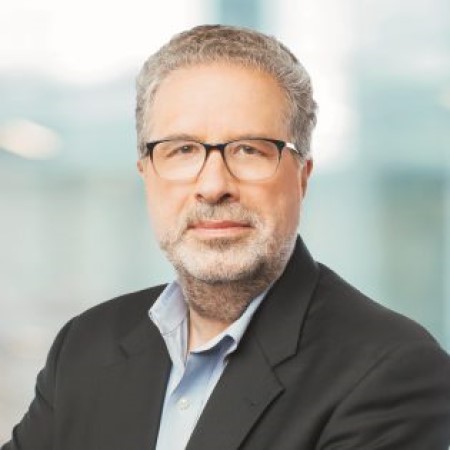Merck & Co. And Gates Foundation Drug Hunters Hopeful Of A TB Breakthrough
Not-For-Profit To Develop Merck’s Compounds
Executive Summary
The Bill & Melinda Gates Foundation has brought together big pharma companies and academic institutes in a non-profit venture to find new drugs to improve tuberculosis treatment. One participant, Merck & Co, talks to Scrip about two promising novel molecules that it discovered for the Foundation’s Medical Research Institute to develop.
A long-term not-for-profit collaboration between the Bill & Melinda Gates Foundation, pharma companies, government and academic researchers aimed at finding better therapies for tuberculosis is beginning to pay off.
Scientists from one of the participating companies, Merck & Co., recently handed over two newly discovered novel antibiotic drug candidates to the Bill & Melinda Gates Medical Research Institute (MRI), the foundation’s in-house drug development organization.
The two preclinical compounds, MK-7762 and MK-3854, are among the first discovered by pharma companies under the auspices of the foundation-sponsored TB Drug Accelerator (TBDA) – and are the first in three years to be moved ahead after the COVID-19 pandemic slowed progress.
The TBDA was launched in 2012 with $20m funding to bring down pre-competitive barriers between pharma companies and government and academic research institute. One of its main goals is to find new drugs which can speed up TB treatment.
Current standard TB drug therapy regimens require treatment with antibiotics isoniazid and rifampicin for six months, plus two more additional antibiotics, pyrazinamide and ethambutol, in the first two months of treatment. That onerous schedule often results in poor compliance, low efficacy and increased risk of resistance.
The TBDA is looking for new drugs to create a regimen lasting no longer than two to three months.
The Foundation’s MRI will soon begin non-clinical and clinical studies of the Merck candidates to see if they can be included in new affordable and shorter combination treatment regimens for TB, irrespective of resistance to currently available TB drugs.
A Hard Nut To Crack
TB suffers from the twin problems of being a difficult disease to target pharmacologically and representing a commercially unattractive market for pharma.
David Olsen is head of Merck’s neglected tropical disease discovery, and has a pharma R&D career stretching back 30 years, which has included lead roles in developing breakthrough HIV and hepatitis C therapies. He told Scrip that TB represents a far harder challenge than most viral diseases. “These bacteria are so much more complex, and [there are] so many ways for TB to sidestep compounds,” he said.
Unique among bacteria, Mycobacterium tuberculosis is encased in a cell waxy envelope, known as the capsule, which prevents many compounds from entering – but this is just one of the challenges the micro-organism presents to drug researchers.
“It can block your compound from being taken up in the cell, it can metabolize your compound in the cell and destroy its antibacterial activity, it can pump the compounds out of the cell,” explained Olsen.
He and his team in Merck started working closely with the US National Institutes of Health in 2013 to screen millions of potential antibiotic compounds, supported by funding from the TBDA. It has taken 10 years to arrive at these two preclinical candidates, with MK-7762 as the lead candidate and MK-3854 as a back-up.
Olsen hopes the drugs could eventually prove to be best in class oxazolidinones as they meet the criteria of having a high barrier to resistance and could have better safety profiles. The oxazolidinones are protein synthesis inhibitors, which in Olsen’s words “go in and mess up” the cellular machinery inside the bacteria that produces the proteins it needs to replicate.
The MRI will shortly begin a single ascending-dose study, before moving into multiple ascending-dose studies. This could then lead to early bactericidal activity studies, with the first data coming from these trials by 2024.
Teaming Up To Fight TB
Before SARS-CoV-2, tuberculosis was the world’s biggest infectious disease killer – and with the pandemic waning it is expected to regain this title soon.
The infection remains a major threat in developing countries, and the COVID-19 pandemic has halted and reversed a recent decline in cases. A total of 1.6 million people died from TB in 2021, making it the thirteenth leading cause of death worldwide.
Membership of the TB Drug Accelerator has changed over the years, with some companies leaving as others join. Current pharma company members are: AbbVie, Eisai Evotec,GSK, Johnson & Johnson, Merck & Co./Merck Sharp & Dohme.
Patience Required
Olsen illustrated the patience needed in the field with an anecdote about meeting Bill Gates in 2016 at a conference in South Africa to celebrate the progress made against HIV thanks to antiretrovirals.
Gates quizzed him on why TB drug discovery was taking so much longer, and Olsen recounted taking the billionaire philanthropist through the standard research operating plan, explaining the painstaking and often trial-and-error process of drug discovery.
“I told him, ‘Bill, no one would promise you we'll have that compound next year, but that's what we're shooting for.’ Well, we didn't have it in 2017.” He added: “But you know, they stuck with us and we stuck with it, and finally got some really nice compounds for development.”
Gates’ Ex-Industry Drug Hunter
Both the MRI and TBDA are headed up by Emilio Emini, a 30-year veteran of pharma industry infectious disease drug discovery, where he played a part in the development of antiretrovirals and vaccines, including Merck’s Gardasil and Pfizer’s pneumococcal disease vaccine, Prevnar.
His current role sees him bring together the many disparate pharma companies and academic research institutes to share pre-competitive information and collectively tackle TB’s many drug-discovery bottlenecks.
“It takes a lot of time to bring 30 people together around the table every quarter, but we are all committed to exchanging information and to pushing things forward,” he said.
The TBDA has so far progressed four novel compounds into clinical trials, including TBA-7371, a DprE1 inhibitor first discovered by AstraZeneca, for which the MRI has just completed a Phase II study.
In parallel with encouraging the discovery of new drug candidates, the TBDA is also looking to develop new combination regimens.
Emini is now overseeing the TBDA’s first global Phase IIb studies of two potential new multi-drug ‘pan-TB’ combination regimens, which will begin this year. These will trial two similar regimens of both investigational and approved antibiotics. The first, known by the acronym DBOS, comprises Otsuka’s delamanid, Johnson & Johnson’s bedaquiline, Otsuka’s OPC-167832 and Pfizer’s sutezolid.
This brings together four different drug mechanisms – the nitroimidazole, diarylquinoline, DprE1 inhibitor and oxazolidinone classes respectively – to attack TB on multiple fronts.
The second regimen, PBOS, swaps delamanid for the similar pretomanid, a drug developed by the not-for-profit TB Alliance.
Despite the many obstacles to cross-sector working, Emini is convinced the TBDA and the MRI organizations will bear fruit, and as it will be the sponsor of the new clinical studies, Emini is clear that the MRI is a true biopharmaceutical development organization.
“The only difference is that we are a not-for-profit organization, but one funded by the largest foundation involved in global health,” he said. “So, I find myself back in pharmaceutical development, and I can see that these two worlds [pharma and not-for-profit] are not that different.
“For me … this is sort of the experiment, to show you can marry these two worlds. Because we are all trying to do the same thing, which is to defeat disease, and we’ll do it with the tools of biopharmaceutical development.”
He is confident that TB will eventually be bested but cannot promise on timelines. “I'm hoping that in the 2030s, we'll see the real fruits of these investments, in very effective therapeutic options and also vaccines that will start to make a difference then.”
Meanwhile now that Merck has handed over its first two candidates, Olsen is excited about his next project, a compound which could represent a totally new mechanism in TB, and which the TBDA is once again funding.
He is even hoping success can lead to another meeting with Bill Gates. “I keep waiting for him to invite me to his house for dinner next time, now that we gave him some development compounds,” he quipped. “But they'll probably wait until their drugs are proven, since the failure rate is really high in drug discovery. So, he's probably holding out for that, but that's okay. No pressure, Bill!”

